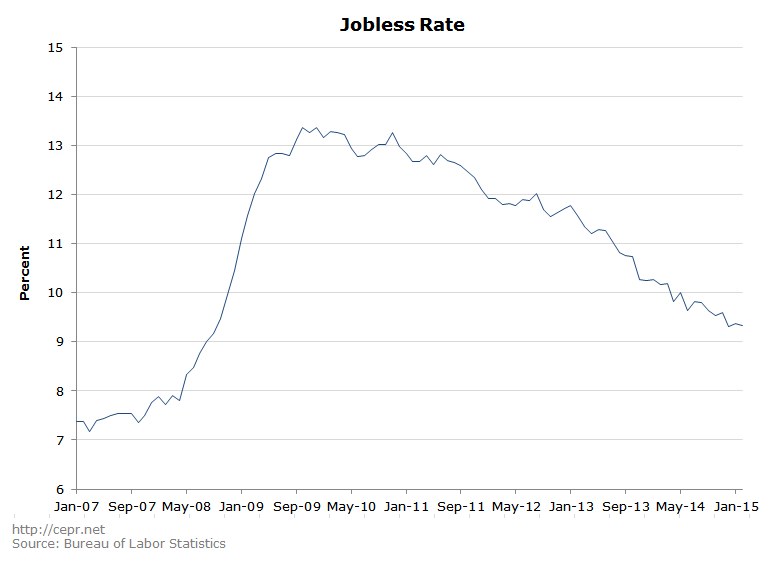March 12, 2015
Many media outlets cite the official unemployment rate—the Bureau of Labor Statistics’ U-3 unemployment rate—when reporting on the recovery in the jobs market. This rate stood at 5.0 percent in December 2007 (the first month of the recession) and rose to a high of 10.0 percent in October 2009; it has since fallen to 5.5 percent. Relative to its peak, the unemployment rate has made up 90 percent of the ground lost between December 2007 and October 2009. However, there are good reasons to think that the unemployment rate overstates the degree of recovery in the job market. We are presenting a series of five measures that provide insights on employment and unemployment that aren’t captured by the official unemployment rate. One such measure is discussed here.
Seasonally Adjusted “Jobless Rate”
The “jobless rate” measures the percentage of Americans lacking a job amongst all those who say they would like to work.
Importance of this measure
The official unemployment rate measures the percentage of Americans who seek employment but are unable to find it. The measure only counts workers as unemployed if they “have actively searched for work in the prior four weeks.” This means that if non-employed workers become disillusioned with their job prospects and stop actively searching for work, they are no longer counted as “unemployed”; thus the unemployment rate falls. (Note that while the Bureau of Labor Statistics tracks the number of “discouraged workers”, they only count workers as being “discouraged” if they have searched for work within the past year. Given that the labor market has remained depressed for over seven years at this point, it’s entirely possible that some prospective workers stopped searching for work over a year ago and won’t begin searching again unless the labor market more fully improves.) The jobless rate — a new measure that we have created — takes account of all Americans who say they would like a job, regardless of whether they are classified as “unemployed” or not. (Data for this measure can be found here.) The jobless rate therefore improves upon the standard unemployment rate by taking account of Americans who haven’t searched for work in the last four weeks.
Employment Recovery Watch
- December 2007 Jobless Rate: 7.76 percent
- Peak: In both October and December of 2009, the jobless rate hit a high of 13.36 percent
- February 2015 Jobless Rate: 9.32 percent
- Percent Recovered: 72.1 percent






